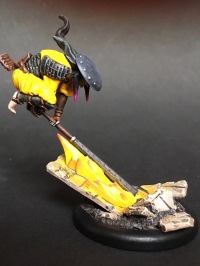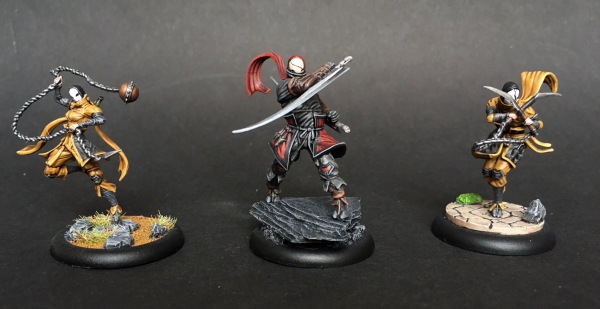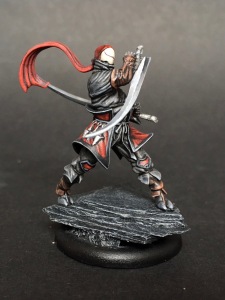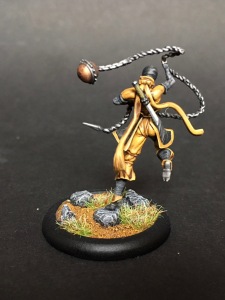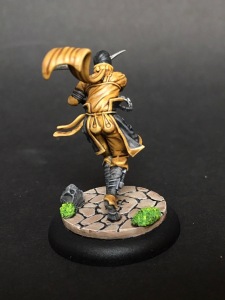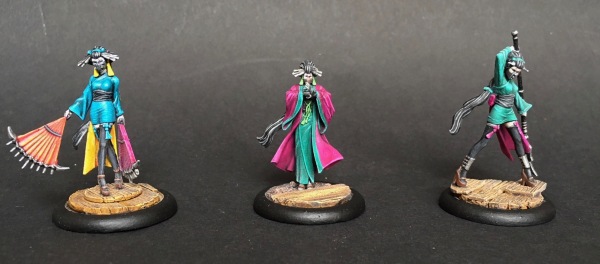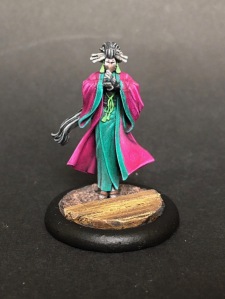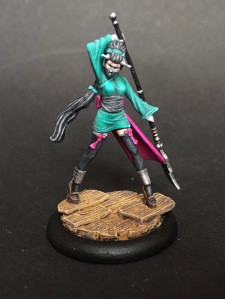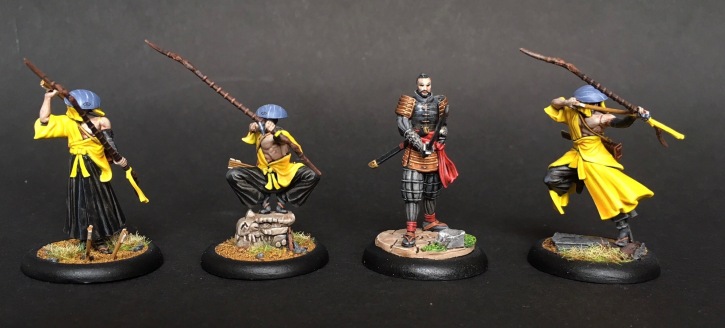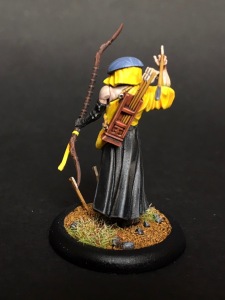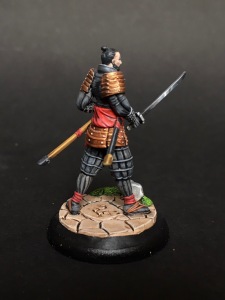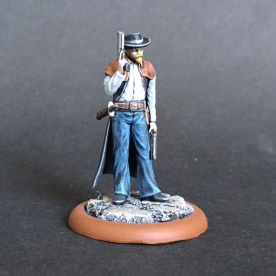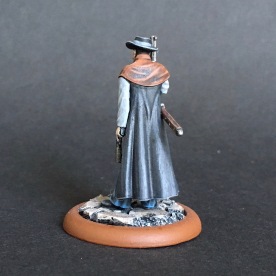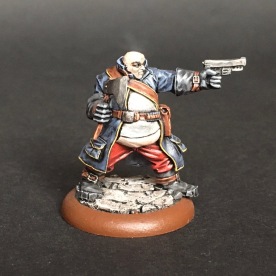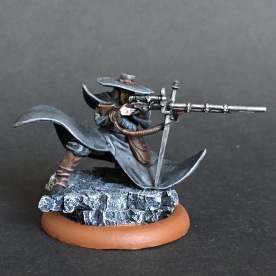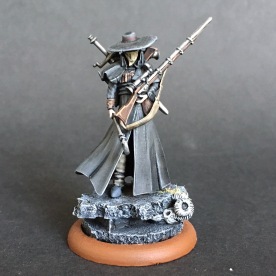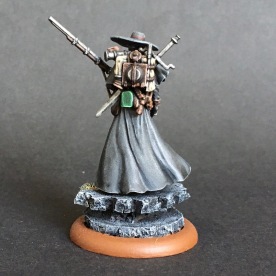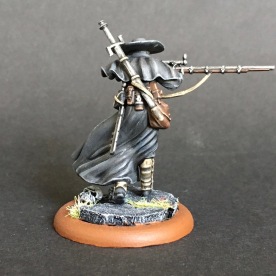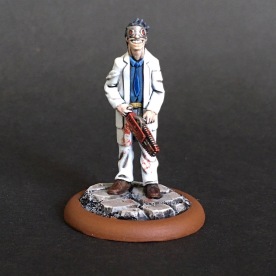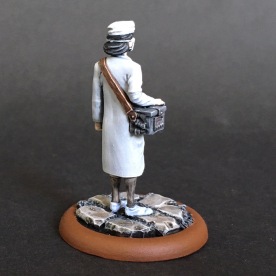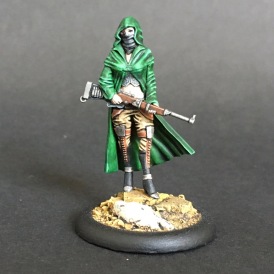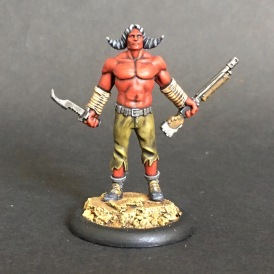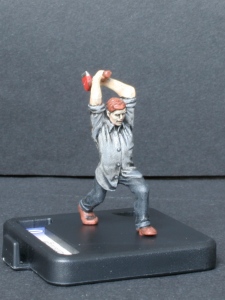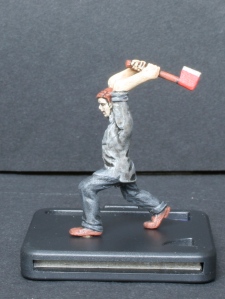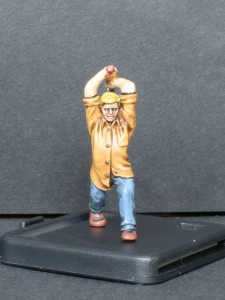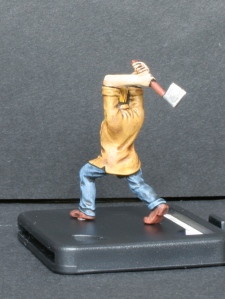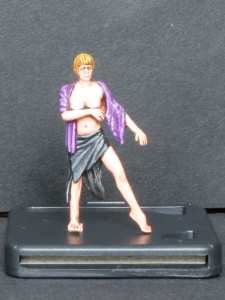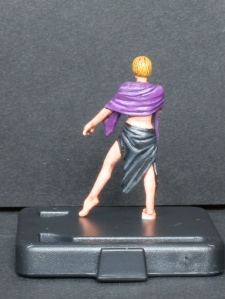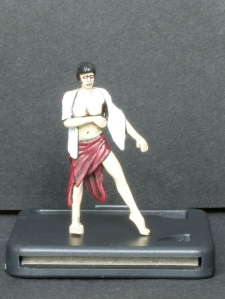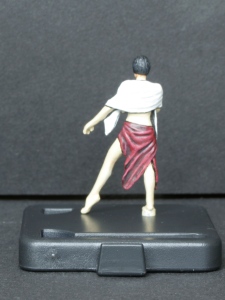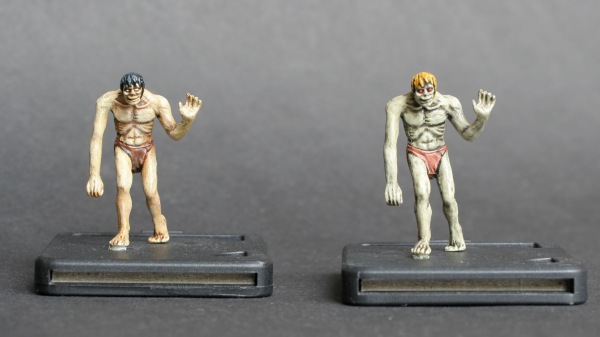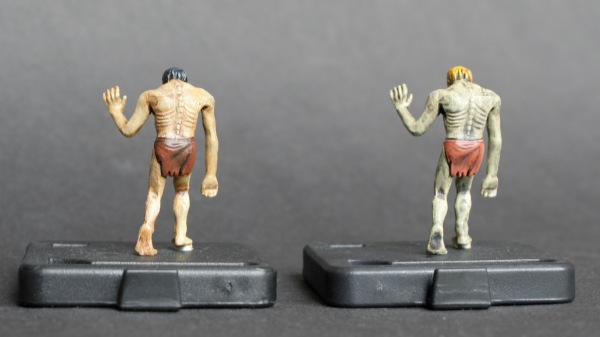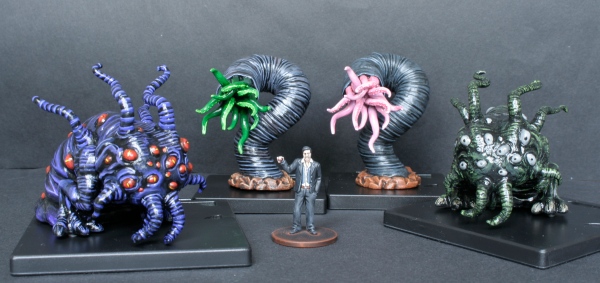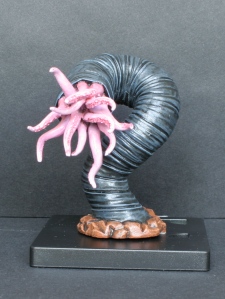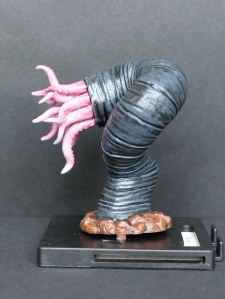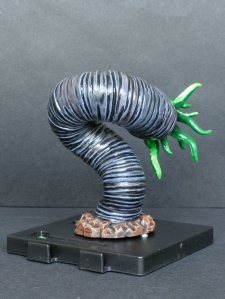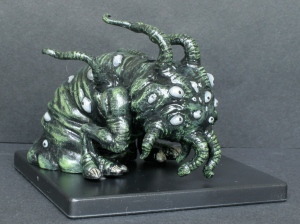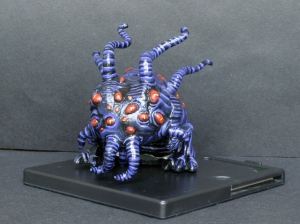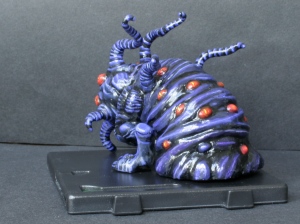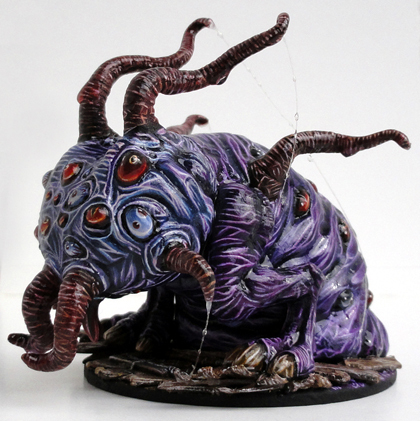I painted these models from the Misaki box set last, as I wanted them to look best, and also because I was a bit scared painting them. Despite using similar colors each model provides a totally different painting experience.
Misaki, Dual-Faction Ten Thunders / Outcast Master
Originally I wanted to paint the Ten Thunders master last, but I was at loss as to what to do with Ototo’s “Tetsubo-splash” so I painted Misaki first. I didn’t like the “leg swoosh” but it is important for stabilizing the model, so I built it as intended. I pondered briefly painting some flower patterns on her pants, as on the box artwork, but quickly dismissed the idea. For once, the model is so delicate that it is really REALLY difficult to do convincing freehand patterns if you are not a pro painter. And secondly, it would have been even more difficult since any mistake would have been difficult to fix with yellow having such a bad opacity property. So in the end I decided to just paint her as neatly as possible, which is challenging enough!
As with the archers I used the very bright GW Bad Moon yellow as a basecoat. For shading I added some brown wash to a mix of GW Lahmian Medium and Golden Yellow (Yriel Yellow), which definitely is an improvement over just thinned Golden Yellow since it makes the folds look more shadowy and not just dark yellow. The rest really is just more or less neat painting with some highlights. I didn’t dare painting eyebrows on, and I next time I would use more subtle colors (just white/grey) for the leg swoosh effect, since I want it to be as discreet as possible (plus, Misaki herself is already colorful enough). Anyway, I left the model as is since I was running out of patience at that point.
Shang, Misaki’s Totem
Misaki’s totem was only slightly less intimidating than Ototo. I watched several youtube tutorials first (I recommend Dr. Faustus painting clinic) and decided to do it the hard way, namely doing the flame tips darker/ more orange and the crevasses lighter. This “inverse highlighting” is really difficult, but fortunately I had been warned. The main advice I have is not to try using a white wash; it doesn’t work, don’t ask why. So you end up blending all the tongues of fire individually, which is a pain in the neck. You definitely need a wet palette or at least some dry retarder. But in the end I was quite satisfied. I think one could go for a more reddish orange towards the tips of the flames – more contrast would result in a more striking look – but as it is it is probably closer to what real fire looks like. The “object source lighting” (osl) effects on the base started as paint spilled over. I didn’t spend much time on it and it looks OK from the distance. Once I have more experience with osl painting I might go back some day and improve it.
Ototo, Ten Thunders Henchman
Finally Ototo. Frankly I don’t like the sculpted shock wave and did a lot of research before taking on the challenge. I used plastic board, cutting it in several pieces, chipping away at the edges, adding dents etc. It looked terrible at the beginning but the end result is what I was aiming at. Overall I feel it was worth the effort (about 3 hours, watching a documentary while doing it).
After the base I thought painting the model would be a walk in the park, as Ototo is quite bulky, but it wasn’t. One reason was that some areas are difficult to reach with the brush. Therefore I would actually recommend painting torso and legs separately and only afterwards gluing then together. Another reason was that the shoulder pads have a very weakly defined surface. Also, the model has actually more details than you would think. Lastly, the blast effect around the tetsubo took some time to paint, too. The good thing is that all the yellow clothes and flame effects tie the trio nicely together, so I am really looking forward to field them on my recently bought 3×3 Malifaux battle mat which I bought at SPIEL Essen.
I currently have no Malifaux models left to paint but I just ordered the Lady Lustice box set, Allison Dade, Mr. Graves, the Pathfinders, Ten Thunders Brothers, and Jorogumo, which should keep me busy until SALUTE 2018. Let me know which models you would like to see painted next, and I see what I can do!









